Welcome to the week.
Our hearts and minds are extra heavy as we start the week given all the news from beyond the cycling and transportation realm. Please take care of yourself and others as we all navigate these rough seas.
Here are the most notable items that our writers and readers came across in the past seven days…
Ribbon rack redo: “Wave” or “ribbon” racks are a scourge on this earth so it was amazing to see how a bike activist group in Calgary has rebuilt them to be actually useful.
Living outside: In this Street Roots are article you can learn what folks who live near dangerous roads think about Mayor Wheeler’s order to prohibit camping next to them.
Thank you, Bicycle Bob: I have a very soft spot in my heart for activists like Montreal’s “Bicycle” Bob Silverman, who died at age 88 this week after a long life of pushing his city to recognize the ills of cars and build North America’s best protected bike lane network.
Advertisement
Stop and frisk in traffic: National bicycling nonprofit People for Bikes has signed-onto a letter to the US Department of Justice and the DOT that takes a clear stand against using minor traffic violations as a pretext to stop people for other suspected crimes.
Arrested Mobility: Charles Brown, a Rutgers planning professor and Equitable Cities founder and CEO has a new podcast named Arrested Mobility that shares the perils of moving around cities for Black, Indigenous and people of color.
Save money on GPS: Our friends at Ride With GPS explain how you don’t have to invest in a fancy GPS device to find and navigate bike routes if you already a fancy phone.
Killer trucks: This piece from Slate about the absurd danger from massive truck front-ends is why I think the federal government should require a warning sticker on the outside of them that shares a “likelihood of death” rating for people outside the vehicle. Instead of a “five star safety” rating folks might get a “five skull warning”.
New tech: If you’ve heard about Web 3.0 and the metaverse and are curious how it might impact your riding, let Cycling Tips be your guide to this strange new world.
Thanks to everyone who shared links this week.


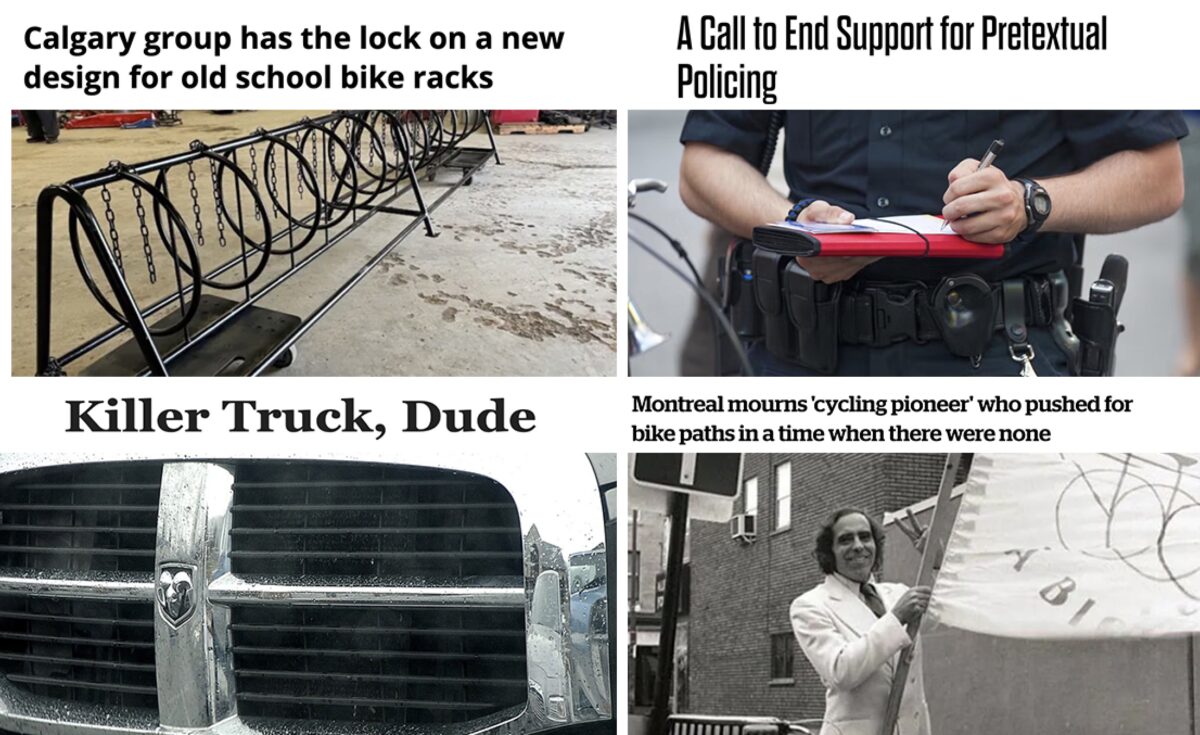
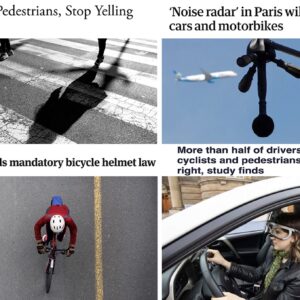
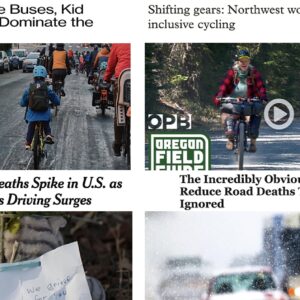
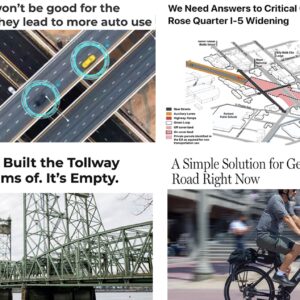
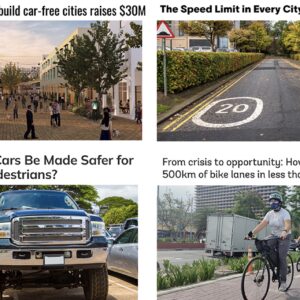
Thanks for reading.
BikePortland has served this community with independent community journalism since 2005. We rely on subscriptions from readers like you to survive. Your financial support is vital in keeping this valuable resource alive and well.
Please subscribe today to strengthen and expand our work.
I met BobSilverman in the early 1980s, when I was a student at McGill University. At that time Montreal was incredibly car-centric and a dangerous place to ride a bicycle. It was even dangerous to be a pedestrian given the unrestrained attitude of most drivers. I have not been back since the early 1990s, but would love to return with my bike. RIP Bicycle Bob.
I love the idea of chains welded to the bike rack! Low cost and super convenient.
Honestly, a “5 skull” warning would be a plus for most Dodge truck buyers. Be careful what you ask for.
gawd you’re so right. honestly, the most sensible way would be to just make non-occupant risk a big part of existing “safety rating” criteria.
Perhaps they could do something similar to how tobacco products are packaged in the EU. Show some sorta graphic image on those big displays cars have and make the user press some sorta confirmation button before they can drive.
RE: Pretextual policing
At the risk of sounding like a broken record I’m absolutely against this throw the baby out with the bath water approach to pretextual policing. Are reforms needed? Yes. Better officer training? Yes. ACAB? Not in a million years. We used to honor the best of the best pretextual policing with Oregon State Police troopers who uncovered MAJOR crimes with pretextual policing. It was called the “Beyond the Ticket” awards. I’ll talk police reform with anyone who wants to listen but wholly reject the notion of tossing everything out the window and starting from scratch. That approach vilifies every sworn officer as corrupt with evil internet when it comes to pretextual policing which isn’t reality.
How does ending pretextual traffic stops require “starting from scratch”? Or to ask another way, what exactly are you suggesting would be started from scratch?
On another note, to say ending pretextual policing vilifies every officer is a stretch. The letter did not at all suggest all police officers cause the inequities they wish to curb by ending pretextual policing. Blaming an approach and calling for its end does not equal vilifying everybody who followed that approach.
Damn.
Because the Slate article compiled so many important points from many other sources, I’m glad it exists. However, its opening and ending are shameful, in my opinion, since the whole article between them is a lecture (I don’t mean that pejoratively) targeting someone who bought a large auto, as if they have no idea their auto is so likely to harm others. If they don’t know, then they could buy the large auto with no notion they are more likely to kill, in which case carelessness for killing others with that auto would be no requisite for purchasing/using it.
Even so, I have (some) hope those who own such autos and read that article without having previously understood its perspective won’t cringe hard enough to dismiss the entire article and its suggestions. But most of all, I have (barely any) hope they’ll stop using those autos.
The piece was also very “culture war” in that it exclusively points fingers at pickup trucks (e.g. those people) instead of also including the SUV trucks (that many liberals/progressives drive). It also made me wonder whether the author drives an SUV truck.
Good point, soren. Perhaps the author deserves more credit on your point, though. I have seen many SUV trucks in my own community, but until your comment, never knew that was a category separate from SUVs or trucks. Perhaps the author also had lumped them in with one or the other.
Like pickup trucks, SUVs are categorized as “light trucks” by the federal government (hence my use of “SUV trucks”)*. SUVs have also seen a large increase in the height of their front grill. In fact, even a “small” SUV like the RAV4 has a far higher front than earlier models:
2022:
1994:
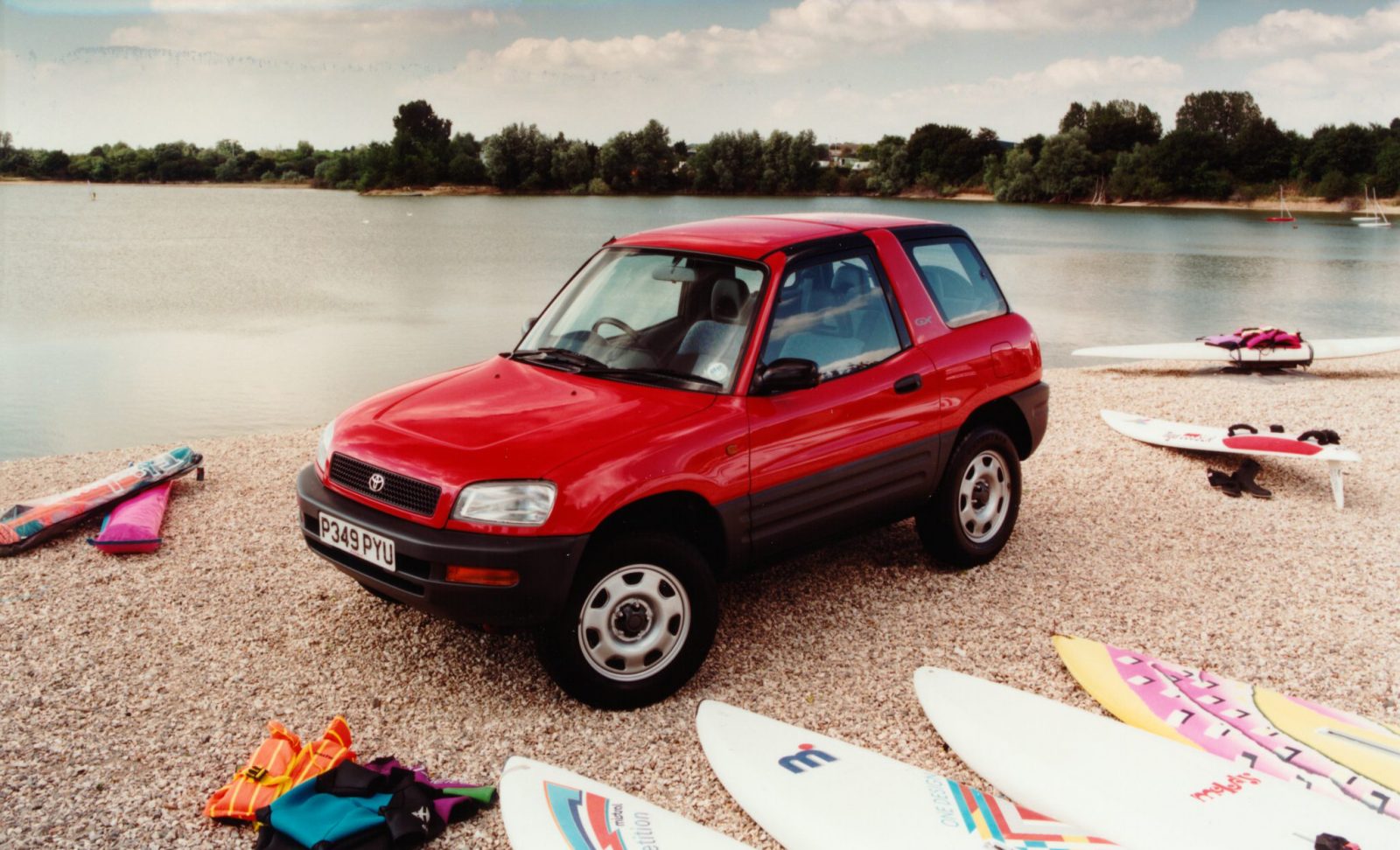
*this exempts them from certain regulations which provides a substantial Federal government subsidy
From many articles in Monday Roundups, I already was aware SUVs are categorized as “light trucks”, but I didn’t think that was what you were referring to in your previous post. The author definitely included SUVs in his pool of offenders, so now knowing you were just talking about SUVs in general when saying “SUV trucks”, as opposed to SUVs with open rear beds, I no longer agree with your previous comment.
From the piece:
With my bold and italic emphasis, what followed your quote was:
“Look, it’s still way bigger than most people need, and still dangerous, but I’m willing to allow it as a somewhat lighter, smaller, and less deadly middle ground in the size wars. You’d still be putting others at risk, as we all do when we drive, but at least you’d have made a gesture toward demonstrating you care about whether you kill someone else or not. And hey, side benefit: Most midsize SUVs don’t cost $50,000, like a Sierra does. (But also: Have you tried a sedan? Or an e-bike???)”
If you ask me, that shows the author wasn’t entirely sincere in asking people to consider an SUV. Much of the article was tongue-in-cheek like that. If you take all the lines regarding SUVs in their surrounding context, it’s quite clear the author thinks SUVs are a problem, even if not as much as an F-150, Ram, or Silverado.